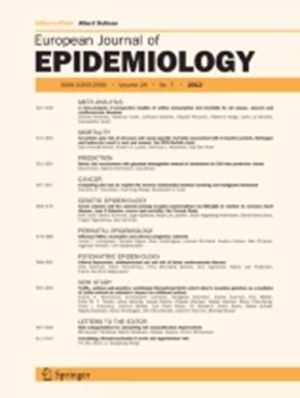Circulating inflammation-related proteome improves cardiovascular risk prediction. Results from two large European cohort studies.
IF 5.9
1区 医学
Q1 PUBLIC, ENVIRONMENTAL & OCCUPATIONAL HEALTH
引用次数: 0
Abstract
BACKGROUND Inflammation plays a crucial role in cardiovascular disease (CVD), but the value of inflammation-related proteins in predicting major adverse cardiovascular events (MACE) is unclear. This study evaluated whether incorporating inflammation-related proteins into the SCORE2 model improves 10-year MACE risk prediction. METHODS This study included 47,382 participants from the UK Biobank and 4,135 participants from the German ESTHER study without prior CVD or diabetes. We tested C-reactive protein (CRP) and 73 inflammation-related proteins measured with Olink® panels. Biomarker selection was performed using least absolute shrinkage and selection operator (LASSO) regression with bootstrapping separately for males and females. Selected proteins were added to the SCORE2 model variables. Model performance was evaluated using Harrell's C-index, net reclassification index (NRI), and integrated discrimination index (IDI). RESULTS Seven inflammation-related proteins but not CRP were selected, including two for both sexes, three specifically for males, and two specifically for females. Incorporating these proteins significantly improved the C-index (95% confidence interval (95%CI)) of the refitted SCORE2 model from 0.716 (0.698, 0.734) to 0.750 (0.732, 0.768) in internal validation in the UK Biobank and from 0.677 (0.644, 0.710) to 0.713 (0.681, 0.745) in external validation in the ESTHER study. The NRI with 95%CI was 12.4% (5.2%, 16.3%) in internal validation and 4.2% (0.5%, 23.6%) in external validation. The IDI also improved significantly. CONCLUSION Incorporating inflammation-related proteins into the SCORE2 model significantly improves the prediction of 10-year MACE risk among individuals without prior CVD or diabetes. Measuring these proteins may enhance risk stratification in clinical practice.循环炎症相关蛋白质组改善心血管风险预测。来自两个大型欧洲队列研究的结果。
背景:炎症在心血管疾病(CVD)中起着至关重要的作用,但炎症相关蛋白在预测主要不良心血管事件(MACE)中的价值尚不清楚。本研究评估了将炎症相关蛋白纳入SCORE2模型是否能改善10年MACE风险预测。方法:本研究纳入了来自英国生物银行的47,382名参与者和来自德国ESTHER研究的4,135名无心血管疾病或糖尿病的参与者。我们用Olink®面板检测了c反应蛋白(CRP)和73种炎症相关蛋白。生物标志物选择分别使用最小绝对收缩和选择算子(LASSO)回归进行,并对男性和女性进行引导。将选定的蛋白质添加到SCORE2模型变量中。采用Harrell’sc指数、净重分类指数(NRI)和综合判别指数(IDI)对模型性能进行评价。结果共筛选出7种非CRP的炎症相关蛋白,其中两性各2种,男性特异性3种,女性特异性2种。在UK Biobank的内部验证中,纳入这些蛋白显著提高了改进后的SCORE2模型的c指数(95%可信区间(95% ci)),从0.716(0.698,0.734)提高到0.750(0.732,0.768),在ESTHER研究的外部验证中,从0.677(0.644,0.710)提高到0.713(0.681,0.745)。内部验证的NRI为12.4%(5.2%,16.3%),外部验证的NRI为4.2%(0.5%,23.6%)。IDI也有显著改善。结论:将炎症相关蛋白纳入SCORE2模型可显著提高无心血管疾病或糖尿病患者10年MACE风险的预测。测量这些蛋白可以在临床实践中加强风险分层。
本文章由计算机程序翻译,如有差异,请以英文原文为准。
求助全文
约1分钟内获得全文
求助全文
来源期刊

European Journal of Epidemiology
医学-公共卫生、环境卫生与职业卫生
CiteScore
21.40
自引率
1.50%
发文量
109
审稿时长
6-12 weeks
期刊介绍:
The European Journal of Epidemiology, established in 1985, is a peer-reviewed publication that provides a platform for discussions on epidemiology in its broadest sense. It covers various aspects of epidemiologic research and statistical methods. The journal facilitates communication between researchers, educators, and practitioners in epidemiology, including those in clinical and community medicine. Contributions from diverse fields such as public health, preventive medicine, clinical medicine, health economics, and computational biology and data science, in relation to health and disease, are encouraged. While accepting submissions from all over the world, the journal particularly emphasizes European topics relevant to epidemiology. The published articles consist of empirical research findings, developments in methodology, and opinion pieces.
 求助内容:
求助内容: 应助结果提醒方式:
应助结果提醒方式:


